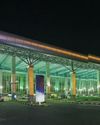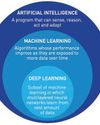
Aero engine manufacturers are working overtime on the development of next-generation commercial aircraft engines. These revolutionary powerplants are slated to enter service in the next decade and will be key to aviation's industry quest to attain net zero emissions from air transport by 2050.
The new generation aero engines which will emerge in the next decade are expected to deliver dramatic improvements in fuel consumption and CO2 emissions over current generation engines, which themselves are highly efficient. Today's engines which power single-aisle jetliners such as CFM International's (CFM) LEAP and Pratt & Whitney's GTF deliver improvements in fuel consumption and CO2 emissions by 40 per cent when compared to eighties-era commercial turbofan engines.
What is increasingly becoming clear, however, is that advanced engine architectures such as open fan, hybrid electric propulsion systems, and new compact engine core designs will be needed to deliver on the efficiency gains sought by engine manufacturers.
RR Civil Aerospace engines already surpass all environmental legislation for noise and emissions, can fly on blended Sustainable Aviation Fuel (SAF) and are up to 98% recyclable under our Revert programme.
New Approach
CFM is aiming to have a potential next-generation commercial aircraft engine ready for service in the latter half of the next decade. CFM's Revolutionary Innovation for Sustainable Engines (RISE) demonstrator engine programme got underway in June 2021, with GE Aviation and Safran, the JV partners in CFM International, now significantly accelerating developmental work. Throughout the RISE programme, the joint GE/Safran engineering team will undertake more than 300 separate component, module and full engine builds.
この記事は Cruising Heights の February 2024 版に掲載されています。
7 日間の Magzter GOLD 無料トライアルを開始して、何千もの厳選されたプレミアム ストーリー、9,000 以上の雑誌や新聞にアクセスしてください。
すでに購読者です ? サインイン
この記事は Cruising Heights の February 2024 版に掲載されています。
7 日間の Magzter GOLD 無料トライアルを開始して、何千もの厳選されたプレミアム ストーリー、9,000 以上の雑誌や新聞にアクセスしてください。
すでに購読者です? サインイン

VIDARBHA INDIA'S NEXT AVIATION HUB?
With the modernisation process for Nagpur Airport moving ahead in full steam, Vidarbha, a long-overlooked region in Maharashtra, is gaining momentum as a potential aviation hub with significant infrastructure projects like Air India's aviation academy in Amravati and the ISHAN air traffic management scheme. But what will really give a film to the region is the development of Nagpur airport by the GMR Group, the creation of a second runway and a spanking new terminal.

BUSINESS AVIATION INDIA'S MISSED OPPORTUNITY?
India's Missed Opportunity?

INDIGO'S WET LEASE GAMBLEAN OPPORTUNITY OR A COST RISK?
IndiGo’s reliance on wet-leased aircraft, including six MAX 8 jets, highlights its efforts to tackle grounded planes and expand capacity. While offering flexibility, this approach poses cost and operational challenges, writes AMEYA JOSHI.

LAST-MILE DELIVERY, AI GOES THE DISTANCE
Artificial Intelligence is revolutionising air cargo and last-mile delivery by optimising logistics, reducing costs, and enhancing efficiency. Despite challenges, Al-driven solutions promise transformative growth for the cargo industry, writes R CHANDRAKANTH

TAMIL NADU'S REGIONAL AVIATION SURGE
Tamil Nadu is set for an aviation boom, with upgrades to key regional airports and plans for new facilities like the Hosur and Parandur airports. These developments aim to enhance connectivity, boost economic growth, and attract trade and tourism across the state, writes RASHEED KAPPAN

POTENTIAL OF ARTIFICIAL INTELLIGENCE IN AIR TRAFFIC MANAGEMENT
Artificial Intelligence promises to transform Air Traffic Management (ATM), improving efficiency, safety, and decision-making. Despite its potential, challenges like regulatory complexities and integration barriers must be addressed, writes DR. S K SARASWATI

INSIGHTFUL MRO
Predictive maintenance is a clear digital priority for MROs. This transformative approach enhances efficiency, reduces costs, and minimises downtime, addressing evolving challenges in fleet management, writes ATUL CHANDRA

INDIAN AVIATION'S 2025 TAKEOFF
India's aviation sector soared to record-breaking domestic passenger traffic in 2024, highlighting robust growth despite challenges like supply chain disruptions and infrastructure constraints. As 2025 unfolds, transformative fleet expansions, new airports, and regional connectivity initiatives promise unprecedented growth, but questions about profitability and execution remain, analyses AMEYA JOSHI

HIGH ON HYDROGEN
Hydrogen fuel presents a transformative opportunity for sus-tainable aviation, offering zero-emission potential. With industry giants like Airbus and Embraer leading advancements, its deployment remains a decade away, observes ATUL CHANDRA

UNTAPPED POTENTIAL OF BUSINESS JETS IN AN ENCOURAGING MARKET
India's business jet market is witnessing growth, fueled by rising UHNWIS and increasing private jet demand. Yet, challenges like high operational costs, inadequate infrastructure, and unclear fractional ownership policies hinder its full potential, explains R. CHANDRAKANTH